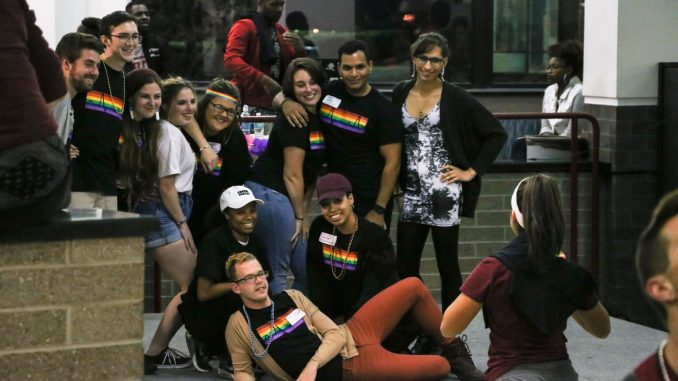
Three years ago today, then-university President Neil Theobald said in his inaugural address, “We have an open and proud LGBT community.”
This is the first time the LGBTQ community was mentioned in a Temple presidential address, said Scott Gratson, director of communication studies in the School of Media and Communication and chair of the LGBTQ Faculty Concerns and Issues Committee.
Since then, a number of new resources have become available for LGBTQ students on campus.
One new resource, first provided by the Wellness Resource Center during Fall 2014, is the “Student Guide to LGBTQIA Life.” The guide contains “helpful terms,” events and safe spaces in Philadelphia and on Main Campus, as well as LGBTQ-focused offices, departments and student organizations.
The guide also includes information specifically for transgender students, like how to change one’s name in Temple’s system and the locations of gender neutral bathrooms on campus.

The Wellness Resource Center hosts several programs, but the largest and most popular are Queer Lunch, OuTu, National Coming Out Week and Lavender Graduation.
Queer Lunch is a monthly event when LGBTQ students eat together and discuss a topic relevant to the LGBTQ experience, OuTu is a Welcome Week event that introduces new students to the LGBTQ resources on campus, National Coming Out Week is an annual set of events that celebrate coming out, and Lavender Graduation is a spring ceremony that highlights the accomplishments of LGBTQ graduates.
Another key resource is the Safe Zone initiative. Safe Zone trainings are four-hour workshops that educate students and faculty on different aspects of the LGBTQ community, so they can become better “allies.”
Sheena Sood, the gender and sexuality inclusion program coordinator for the Wellness Resource Center, helps coordinate programs for LGBTQ students.
Sood said new programs like Queer Lunch and Safe Zone are possible because there are now “resources to fund a position on campus” that focuses on LGBTQ issues.
The two largest LGBTQ student organizations on campus are the Queer Student Union and Queer People of Color, which was established in Spring 2014. Over the summer, a new organization, Students for Trans* Awareness and Rights, began applying for organization status.
Despite the new resources and groups provided for LGBTQ individuals, Temple is still catching up to other Pennsylvania colleges.
Campus Pride, a national organization that seeks to develop programs and services for LGBTQ students on college campuses, maintains an index of the country’s most inclusive campuses. Both the University of Pennsylvania and Penn State appeared on Campus Pride’s 2016 list featuring the top 30 LGBTQ-friendly campuses, while Temple does not appear in the index at all.
One disadvantage Temple has when compared to Pennsylvania schools like the University of Pennsylvania, Penn State, and Lehigh University is its lack of a designated LGBTQ or gender and sexuality center.
“It’s 2016, and frankly LGBT centers were a given in 1993, so the fact that we’re still well behind the times is kind of shocking,” Gratson said. “We still have a very, very long way to go to come close to our peer institutions.”
Aside from an LGBTQ center, Jamya Day, president of QPOC, said she thinks Temple can improve its inclusivity by introducing more LGBTQ organizations and programs on campus.
“Whenever somebody needs to talk to somebody queer it’s either QPOC or QSU and I don’t mind being an advocate for the queer youth on campus, but I can’t be the mouthpiece for everyone because everyone identifies differently,” Day said.
“I was just looking at Penn’s website, and they have LGBTQ [organizations] for every intersection you could possibly think of,” Day added. “So I think having more [organizations], especially aimed more towards different races, different religions, different majors even, could be really helpful for a lot of students.”
Sood said funding is an obstacle when trying to implement new programs.
“The budget that we work with, I think we do amazing things with it,” she said. “But I also think that the money is already allocated, so any new ideas don’t necessarily always get funded.”
Day said one way to improve inclusivity in the classroom would be “to have all professors go through mandatory Safe Zone training.”
In terms of pushing for university-wide changes, Gratson said students must “not stop talking about this” and remember that there is no “quick-fix solution.”
“Now that LGBT issues are getting some modicum of attention and we’re starting to see positive movement, [there is] the response of, ‘Oh, why are we always talking about this?’ But overall, the silence is still deafening,” Gratson said. “A couple of voices might be an improvement from silence, but there’s still a long way to go.”
Alexis Anderson can be reached at alexis.s.anderson@temple.edu.


Be the first to comment